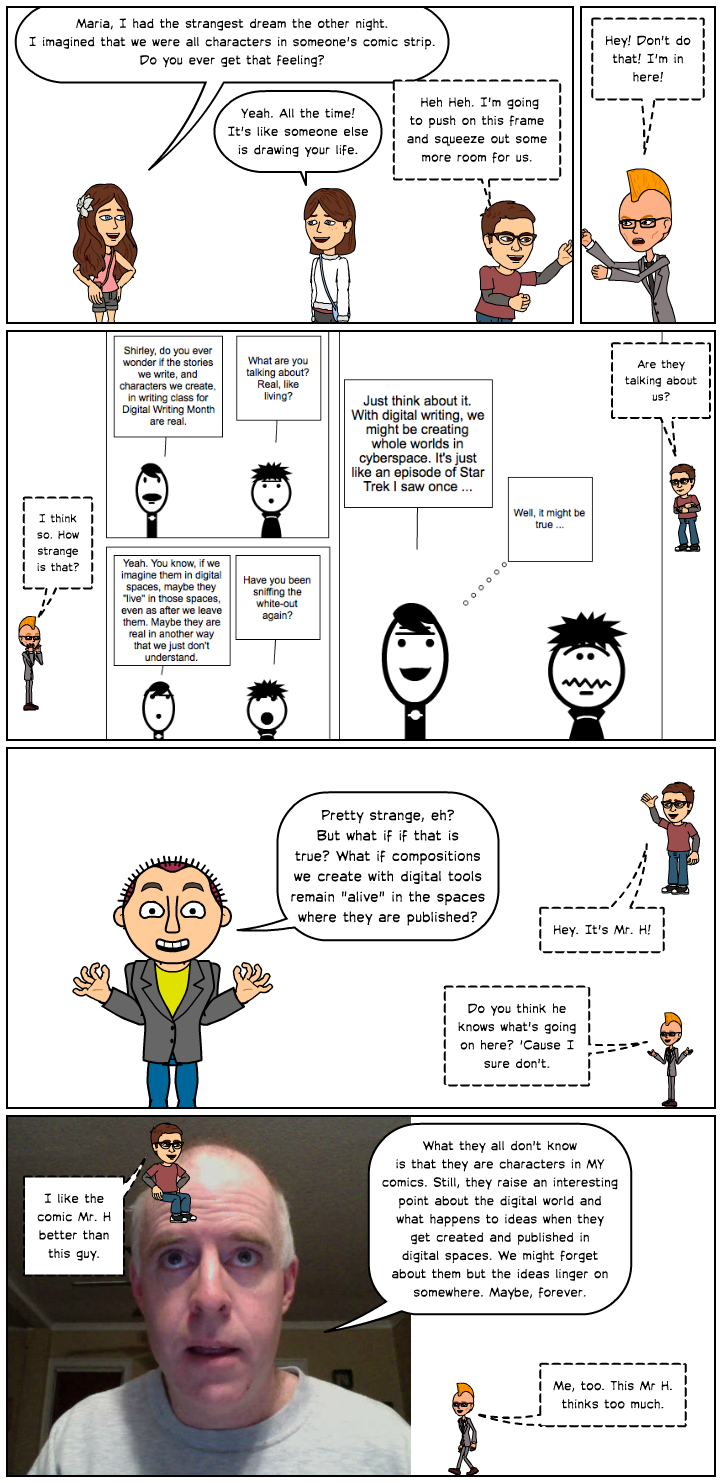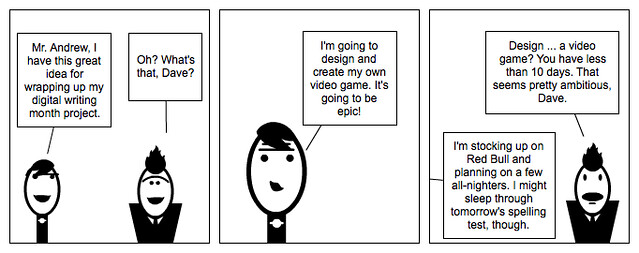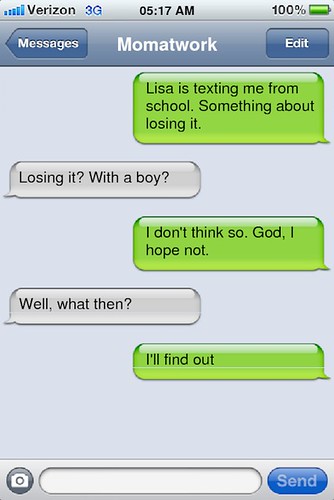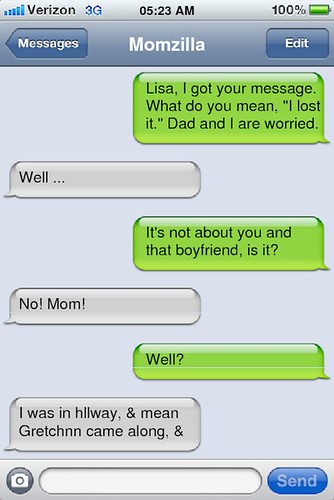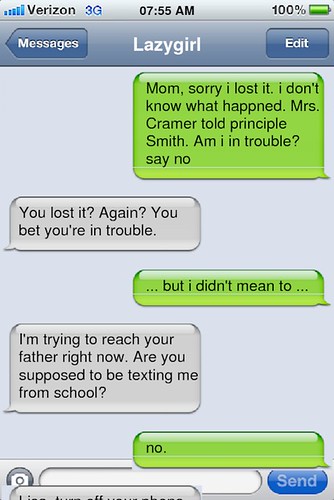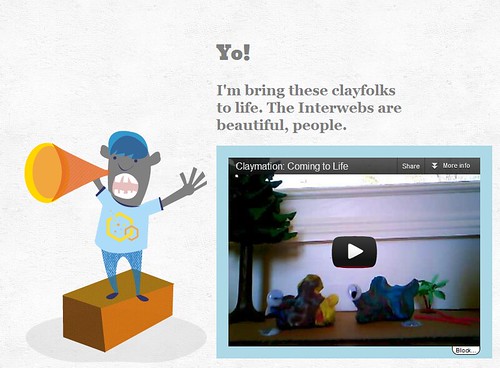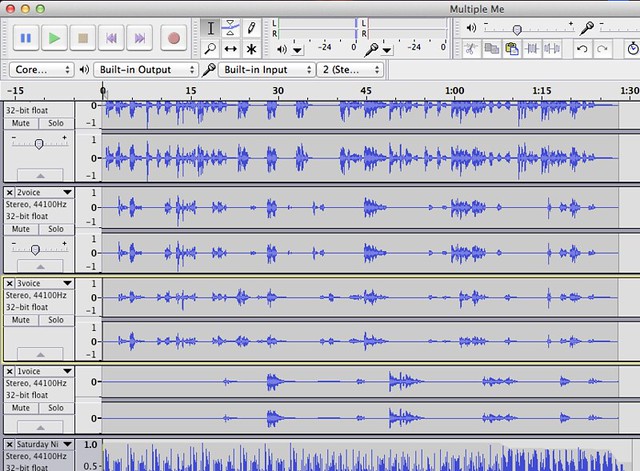
I’ve been playing around with audio as part of Digital Writing Month, and wondering how I might be able to “layer” in multiple voice tracks for a poem about multiple aspects of personality. I ended up using Audacity, and tinkered with the pitch and effects setting to differentiate the layered voice — so that one is low, one is high and the main one is smack dab in the middle. A fourth voice gives a little echo to some of the lines of the poem. It’s very odd to compose this way, and yet, it is fascinating, too. It was as if I were splitting me apart and then reconstructing my voices back into the whole, but on different points of the spectrum. (although at times, it sounds like the Borg talking)
And actually, it’s pretty fascinating to see how your words become waves when you are using audio files in a system like Audacity. The peaks and valleys – the gaps of silence – all remind you that our voice is really nothing more than sounds on the audio spectrum.
Take a listen to the podcast of the poem:
And here is the poem, as text:
Multiple Me
Those voices I hear
have become a chorus in my mind –
reverberations of an identity:
the confident me
the meek me
the analytical me
the poetic me
tapping into tools that may move me beyond
the pen and out into the wider world
with our voices
all merging
together —
I speak from this space (space, space)
with those voices in mind (mind, mind)
I hear them reply to my query (of course, you don’t say, what did you expect)
as if my questions were nothing but mere tangled wires,
nodes of information running through these veins
away from my brain
down deep into my heart
where logic has long since been forgotten
Yes, they are me
Yes, we are one
Yes, these strands become me
becoming us
when we share this same page together
in sound
in image
in voice
Try not to pull too hard on me
as I close my eyes to dream
of how this fabric that rips so easily by the barbs of
words and wonder
can be woven back together again
in order to make me whole.
Peace (in the poems),
Kevin
